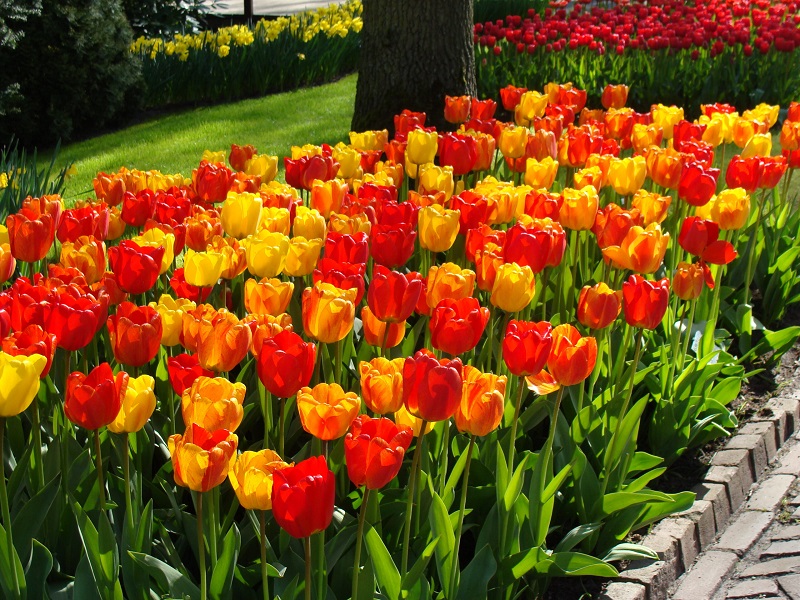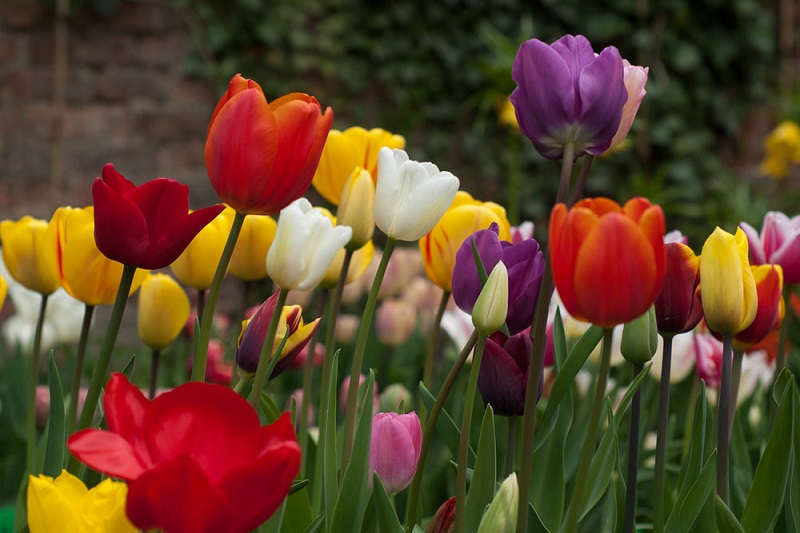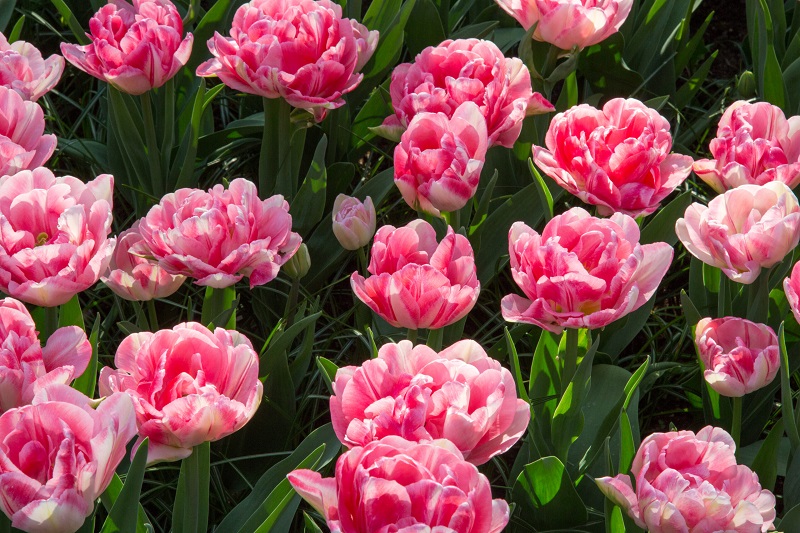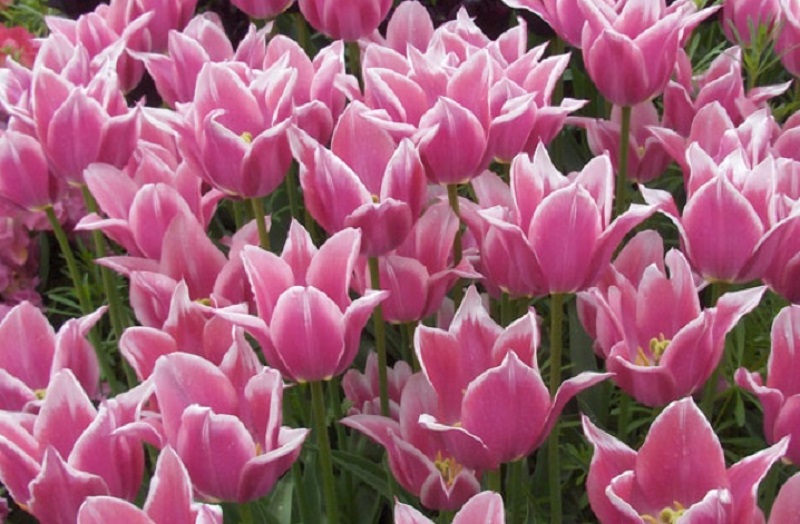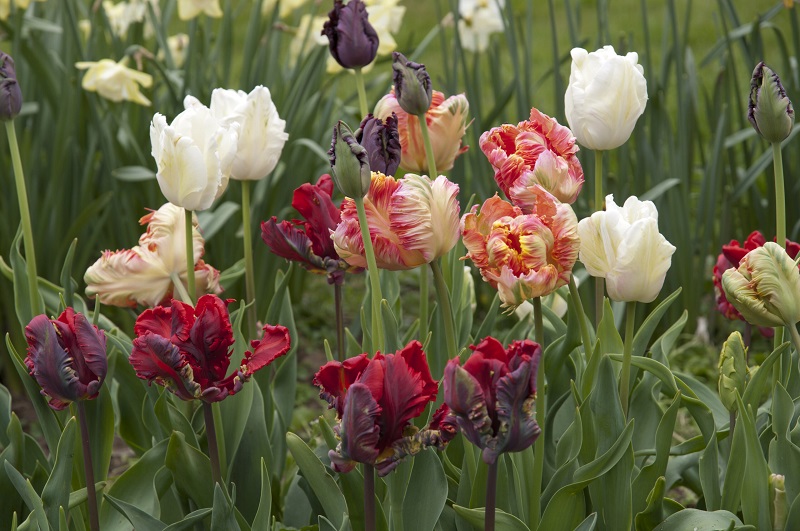Darwin Hybrid Tulips are celebrated for their stunning blooms, vibrant colors, and robust growth. Originating from the Netherlands and named after Charles Darwin, these tulips have become a favorite among gardeners and horticulturists for their striking appearance and reliability. This comprehensive guide explores the characteristics, growing conditions, and care required for Darwin Hybrid Tulips, offering […]
Tulips
Tulips are among the most beloved flowers in the world, admired for their vibrant colors and elegant shapes. Native to Central Asia and cultivated in many parts of the globe, these perennial bulbs have become a symbol of spring and renewal. This comprehensive guide will take you through everything you need to know about tulips, from their various types and botanical aspects to growing conditions, care, and cultural significance. Whether you’re a seasoned gardener or a newcomer to the world of tulips, this article will provide you with valuable insights to enhance your gardening experience and appreciation of these stunning flowers.
Types and Varieties of Tulips
Darwin Hybrid Tulips
Darwin Hybrid Tulips are known for their large, sturdy flowers with strong stems, making them ideal for garden beds and displays. These tulips bloom in a range of vibrant colors including red, pink, yellow, and orange.
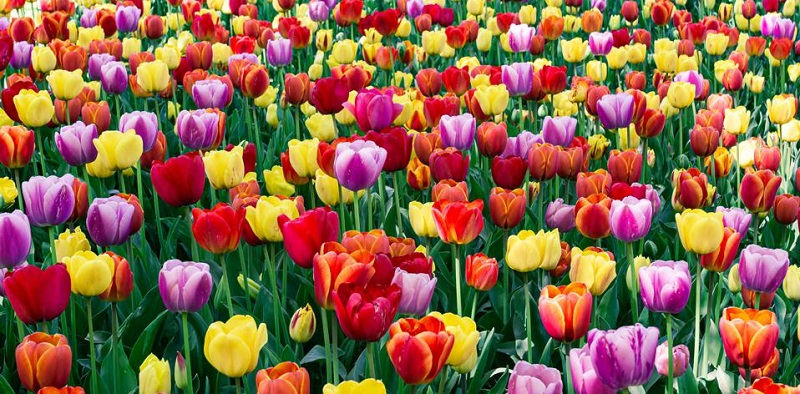
Triumph Tulips
Triumph Tulips are characterized by their small to medium-sized blooms and classic tulip shape. They come in a variety of colors, such as red, pink, yellow, white, and various combinations.
Double Early Tulips
Double Early Tulips feature many layers of petals, resembling small peonies or roses. They bloom early in the season and are available in colors like red, pink, white, and yellow.
Lily-Flowered Tulips
Lily-Flowered Tulips have narrow, elongated petals that give them a lily-like appearance. These tulips are available in colors such as red, pink, yellow, and white.
Parrot Tulips
Parrot Tulips are known for their unique, feather-like petals with vibrant, contrasting colors. They resemble the plumage of a parrot and come in shades of green, red, yellow, and orange.
Rembrandt Tulips
Rembrandt Tulips feature streaked or feathered colors that are reminiscent of the famous artist’s work. They are available in various colors including red, yellow, and white.
Fringed Tulips
Fringed Tulips have petals with fringed or ruffled edges, creating a distinctive look. They come in colors like red, yellow, pink, and white.
Greigii Tulips
Greigii Tulips are known for their compact flowers and strikingly patterned leaves. They are available in colors such as red, orange, yellow, and pink.
Kaufmanniana Tulips
Kaufmanniana Tulips, also known as the “Waterlily Tulips,” have small, star-shaped flowers that open wide. They typically bloom in yellow with red stripes and pink.
Single Late Tulips
Single Late Tulips produce large, single blooms that appear later in the season. They come in various colors including red, pink, yellow, white, and orange.
Fosteriana Tulips
Fosteriana Tulips have broad petals and vibrant colors, making them stand out in any garden. They are available in shades like red, yellow, orange, and pink.
Tarda Tulips
Tarda Tulips are small, star-shaped flowers with bright, cheerful colors. They usually bloom in yellow with red stripes.
Botanical Aspects of Tulips
Taxonomy
Tulips belong to the family Liliaceae and the genus Tulipa. There are many species and subspecies within this genus, each with unique characteristics.
Morphology
- Bulbs: Tulip bulbs are the underground storage organs that provide nutrients to the plant. They are essential for the flower’s growth and blooming.
- Leaves: Tulip leaves are typically lance-shaped and grow from the base of the plant. They help in photosynthesis and nutrient storage.
- Flowers: Tulip flowers have a distinctive cup or goblet shape with six petals, making them instantly recognizable.
Growing Conditions for Tulips
Climate and Temperature
Tulips thrive in temperate climates with a cold winter period. Ideal temperatures range from 35°F to 65°F (1.7°C to 18°C). They require a period of dormancy in colder temperatures to bloom effectively.
Soil Requirements
Tulips prefer well-draining soil with a pH level between 6.0 and 7.0. Sandy loam or loamy soil is ideal. Ensure good drainage to prevent waterlogging and bulb rot.
Light Requirements
Tulips need full to partial sunlight to grow well. They should receive at least 4 to 6 hours of sunlight daily. In areas with hot climates, some afternoon shade can help protect the bulbs.
Watering
Regular watering is crucial, but the soil should be allowed to dry out slightly between waterings. Over-watering can lead to bulb rot, so ensure proper drainage.
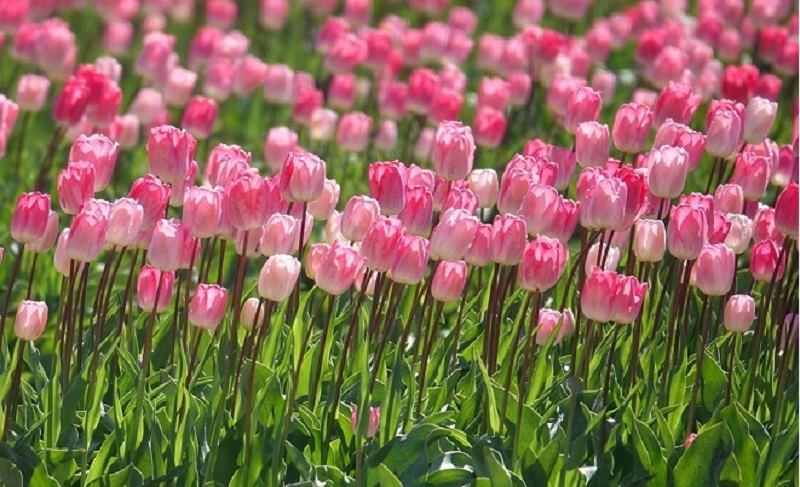
Planting Tulips
Timing
Plant tulip bulbs in the fall, about 6 to 8 weeks before the first frost. This allows the bulbs to establish roots before winter.
Planting Procedure
- Depth: Plant bulbs about 6 to 8 inches (15 to 20 cm) deep.
- Spacing: Space bulbs 4 to 6 inches (10 to 15 cm) apart.
- Soil Preparation: Mix compost or well-rotted manure into the soil to improve fertility and drainage.
Care and Maintenance
Fertilization
Use a balanced fertilizer, such as a 10-10-10 blend, applied at planting time and again in early spring. Follow the manufacturer’s instructions to avoid over-fertilizing.
Pruning and Deadheading
Remove spent flowers to encourage the plant to focus energy on bulb development rather than seed production. Allow the foliage to die back naturally to nourish the bulb for the next season.
Pest and Disease Management
- Pests: Common pests include aphids and spider mites. Use insecticidal soap or neem oil for treatment.
- Diseases: Watch for fungal diseases like gray mold and root rot. Ensure proper spacing and drainage to prevent these issues.
Harvesting and Storing Tulips
Harvesting Tulips
Cut tulips when the buds are still tight but show color. Place them in water immediately to prolong their vase life.
Storing Bulbs
After flowering, allow the foliage to die back naturally. Dig up the bulbs and store them in a cool, dry place until replanting in the fall.
Propagation
Methods of Propagation
- Division: Divide bulbs when they have multiplied, usually every 3 to 4 years.
- Seed Propagation: While less common, tulips can be grown from seeds, though this method is more time-consuming and less predictable.
Timing and Conditions
Propagate during the growing season for optimal results. Ensure favorable conditions for rooting and bulb development.
Cultural Significance of Tulips
Symbolism
Tulips symbolize love and springtime renewal. They have been celebrated in various cultures for their beauty and elegance.
Use in Floral Arrangements
Tulips are popular in floral arrangements due to their classic appearance and wide range of colors. They are commonly used in weddings, events, and seasonal decorations.
Conclusion
Tulips represent a beautiful and diverse group of flowers with a rich history and cultural significance. Their wide range of types, stunning colors, and elegant shapes make them a favorite among gardeners and flower enthusiasts alike. By understanding their botanical aspects, growing conditions, and care requirements, you can successfully cultivate tulips and enjoy their vibrant beauty each spring. Embrace the charm of tulips and enhance your garden with these remarkable flowers.
Triumph Tulips are celebrated for their early bloom, compact size, and vibrant colors, making them a favorite among gardeners and floral enthusiasts alike. Originating from the Netherlands, these tulips stand out for their ability to add a burst of color to gardens and floral arrangements with their stunning appearance. This comprehensive guide delves into the […]
Double Early Tulips are a beloved variety of tulips known for their lush, multi-layered blooms that resemble peonies. These early-blooming tulips offer a burst of color and elegance in spring gardens, making them a favorite among gardeners and floral enthusiasts. This comprehensive guide provides insights into the characteristics, growing conditions, and care requirements for Double […]
Lily-Flowered Tulips, renowned for their slender, lily-like petals and elegant appearance, are a stunning addition to any garden or floral arrangement. Native to the tulip family, these beautiful flowers are celebrated for their unique shape and vibrant colors. This comprehensive guide explores the distinctive features of Lily-Flowered Tulips, including their historical background, botanical classification, growing […]
The Enchanting World of Parrot Tulips: A Comprehensive Guide Parrot tulips are among the most visually stunning flowers in the tulip family, celebrated for their striking, feather-like petals and vivid, exotic colors. With their unique appearance and vibrant hues, they capture the imagination of gardeners and flower enthusiasts alike. This article delves into the world […]

